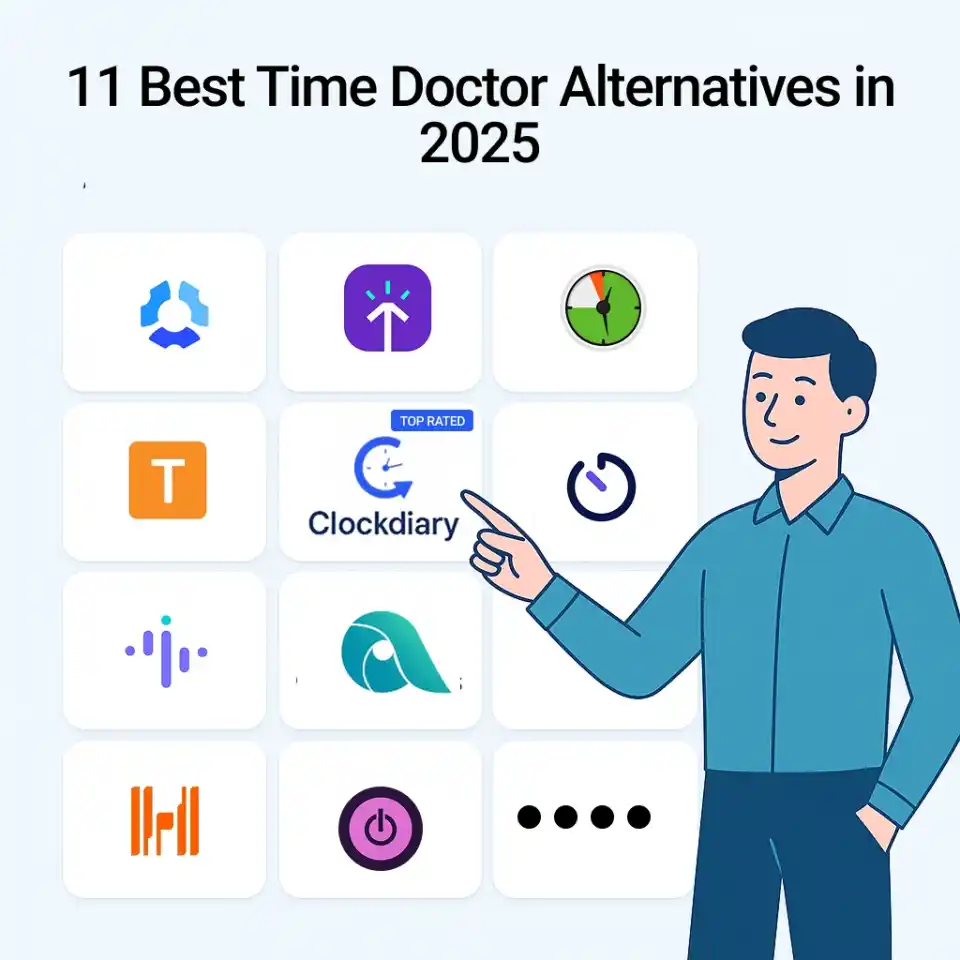Struggling to manage employee work hours effectively? Timecards are key to tracking when employees start and end their shifts, ensuring accurate payroll, efficient scheduling, and legal compliance.
Gone are the days of manually inputting data onto physical cards and adding it to a timesheet. With today’s technology, timecards are now digital, allowing for instant synchronization and streamlined data management.
In this blog, we’ll explore what timecards are, why they’re important, and how different types can benefit your business. Learn how to use timecards effectively to boost productivity and manage your team’s work hours seamlessly.
What is a Timecard?
A timecard is your solution for recording when employees clock in and out. Whether it’s a physical card, a digital device, or part of software, a timecard keeps an accurate record of work hours, syncing with timesheets to streamline payroll, scheduling, and workforce management.
For businesses with hourly workers, a timecard is essential. It tracks arrivals, departures, and total work hours, helping you manage your team and finances efficiently. Industries like manufacturing, construction, hospitality, and retail use timecards extensively for managing shift and hourly workers effectively.
What are the basic components of a Timecard?
Timecard consists of both constant and variable data, which means there is some information about the employee on the card that does not change over time. Also, there is variable data related to pay periods and specific shifts.
Constant components on a timecard chart consist of the following details which are constant in nature and cannot be changed over the working period.
- Employees Name
- Department
- Employee’s ID Number
- Dates Worked
- The pay period covered
- Total hours worked for the pay period
- Work start and end times
- Breaks
- Overtime hours, if any.
Not just that, There are few more feature comes under the TimeCard contaning additional information about notes on projects or tasks, details about special circumstances, and helps in tracking absences as well.
This data coincides with fields in the time clock or timesheet, thereby allowing administrators to effortlessly track their records with the appropriate variable data for each employee.
Types of Timecards
There are 4 main types of employee Timecards that businesses have appopted over time for the ease of employee work tracking system.
- Punch Cards: These are old-fashioned, physical timesheets that had to be inserted into a punch clock, to record clock-in and clock-out times. Post this, those time stamps were manually transferred to the worker’s timesheet for attendance tracking and payroll.
- Swipe Cards: These are modern, electronic timecards, that workers swipe through the machine to record their times. On swiping, the data is automatically swiped to the electronic time clock. These cards also serve as an employee badge, thereby providing them access to company property.
- Online Cards: These are online and digital time-tracking portals in which employees can enter their clock-in and clock-out times. Employees get an identification number, or in some cases, a login ID and password. They must input this information into the system, post which their time is automatically recorded into a centralized database.
- Mobile And Web-Based Apps: There are Cloud-based and SaaS mobile applications allow employees to record their clock-in and clock-out times on the go, by virtue of their mobile devices. This is the most sought-after type of timecard in mordern era.
While the technology behind this technological wizardry has revolutionized at a never-seen-before scale, the basic concept remains pretty much the same i.e Workers clock in and clock out and the data gets recorded into the company’s systems.
Benefits of Using Timecards
Employing timecard software for work can prove to be a boon for both employees and employers. Employers can utilize them to keep track of their staff, cut down on absenteeism, and ensure a seamless payroll process as well. Now, let’s take a look at some of the powerful reasons that advocate in favor of using timecards in workplaces:
- Improved Productivity and Efficiency: As a manager, if you can keep track of the amount of time employees spend on specific projects or tasks, you can figure out areas where productivity can be improved and make necessary adjustments accordingly.
- Effortless Attendance Control: With timesheets, you can easily track the time when employees are clocking in and out. Thus, you can rest assured that employees are taking their breaks at the appropriate time slot and not working overtime without prior authorization.
- Administrative Work Evaluation And Growth Opportunities: Timecards provide a comprehensive record of employees’ work activities. This comes in handy to examine how time is spent and figure out growth opportunities. This information can help you make more informed decisions about workflow, staffing, and budgeting.
- Compliance: Employee timecards bring record to the table which can used to demonstrate compliance with labor laws and regulations, such as minimum wage requirements and overtime.
- Billing and Payroll: These Payroll timesheets are used to craft accurate client billing and payroll records for the time employees invest in specific projects.



